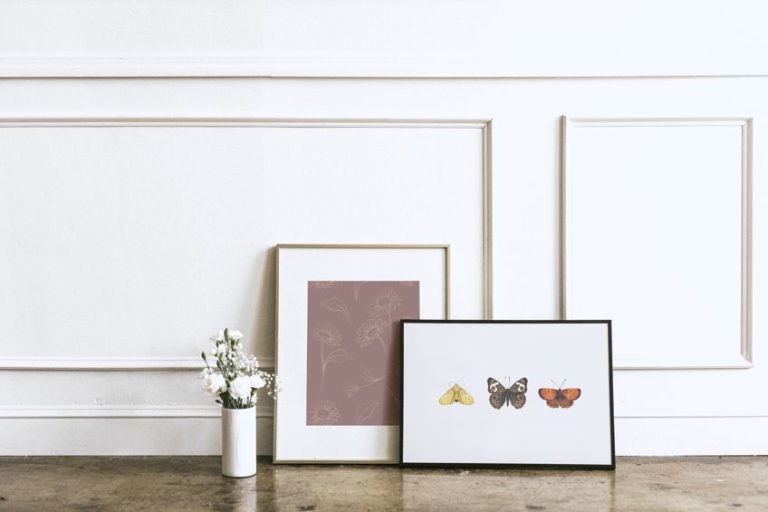What Is a Narrative Poem? – Writing Poems That Tell a Story
This post may contain affiliate links. We may earn a small commission from purchases made through them, at no additional cost to you.
What is a narrative poem? This is a type of poetry that is rather self-explanatory in what it actually is, yet it is a poetry type that is probably far lesser known than something like a sonnet. Today, we are going to have a look at a few different types of narrative poems, a brief history of the form, a few famous narrative poems and poets, and even a short foray into how to write narrative poetry. There is much to consider with this long-lasting narrative form, so let us get started and have a look at narrative poetry!
Table of Contents
What Is a Narrative Poem?
When one generally thinks of a narrative, one is often immediately pulled towards the more famous narrative forms, such as novels or plays, but there are also many poems that make use of narrative structures. In fact, a poem that tells a story is one of the oldest forms of poetry that exist. Many of the most ancient poems told stories, and much of the time, these kinds of poems also formed part of the long-standing oral tradition.
The oral tradition is simply a term that refers to pre-writing societies, and it often took a very long time into human history for us to start recording many narratives. Take something like the Grimm Fairy Tales as an example. These classic fairy tales are not poems, but they were also not written by the Grimm Brothers as some believe, and the brothers who wrote the book that has led to their fame were instead archivists who traveled throughout Germany and simply wrote down the traditional fairy tales that were told by regular people.
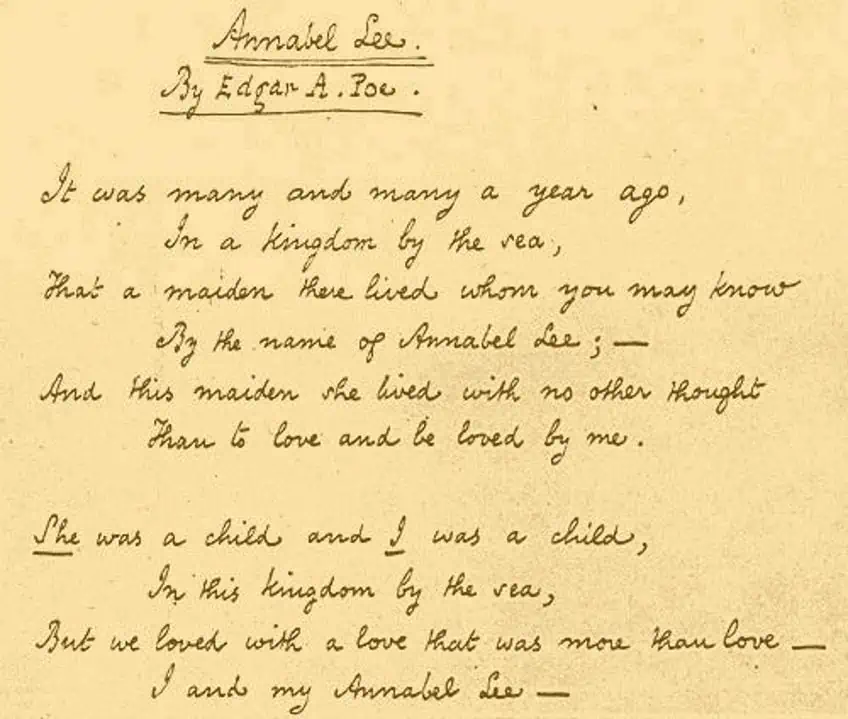 Annabel Lee (1849) by Edgar Allan Poe; Edgar Allan Poe, “Annabel Lee”, 1849 fair copy., Public domain, via Wikimedia Commons
Annabel Lee (1849) by Edgar Allan Poe; Edgar Allan Poe, “Annabel Lee”, 1849 fair copy., Public domain, via Wikimedia Commons
Many ancient poems followed that tradition, and because some of these ancient poems may have fallen out of human usage before any archivists came along to record them, we have no idea how many poems from the earliest days of human activity have been forever lost to us. However, that has not stopped poetry, and especially narrative poetry from continuing into the present day.
Poetry also generally isn’t as prominent as it once was, and narrative poems are no different. However, what is a narrative poem in more exact terms? It is simply a poem that tells a story, and because of this, it does not necessarily conform to many of the standard characteristics that are often associated with poems in general. For instance, they do not need to rhyme or follow any particular narrative poem structure. They are often longer though, and they will include characters and possibly even dialogue.
The reason a narrative poem is not simply a piece of prose, like a novel or short story, is because it also uses specific poetic techniques. A narrative poem does not need to make use of rhyme, but it can. It can structure itself around poetic meter or make use of a line structure that one may generally see in a poem.
However, we will go into more detail about the specific characteristics of narrative poems below. Let us first have a brief look at the history of narrative poetry.
A Brief History of Narrative Poetry
As has been mentioned, the earliest origins of narrative poetry go back to the oral tradition in human existence, and much of that is prehistory. This simply means that it existed before the beginnings of a civilization’s recording of historical events, and so the “prehistoric” era actually varies based on the culture with some of the earliest to record their poetry being the ancient Greeks.
Some of the earliest and most famous narrative poems are from the ancient Greek tradition, especially the works of Homer. These works, most notably the Iliad and the Odyssey, have become some of the most famous instances of epic poetry. Epic poetry is one of the oldest forms of narrative poetry that we are aware of in our shared history, but there are many other forms of older narrative poems that formed part of the oral tradition, such as the tales of Robin Hood.
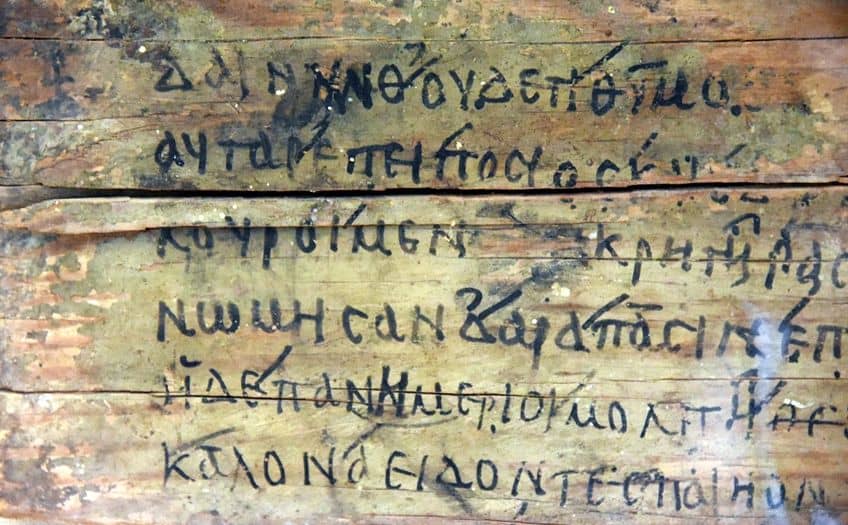 Wooden board (writing tablet) inscribed (Greek) in ink with lines 468-473, Book I of Homer’s Iliad (400-500 CE); Osama Shukir Muhammed Amin FRCP(Glasg), CC BY-SA 4.0, via Wikimedia Commons
Wooden board (writing tablet) inscribed (Greek) in ink with lines 468-473, Book I of Homer’s Iliad (400-500 CE); Osama Shukir Muhammed Amin FRCP(Glasg), CC BY-SA 4.0, via Wikimedia Commons
The earliest narrative poems were often part of folkloric traditions and were passed down through the generations as they were iterated on and altered. This has led to contemporary versions of some of these ancient forms that are not necessarily exactly like they may have been when they were originally told. The method of telling a story through a poetic form may not be as large as it once was, but there could be an argument made that contemporary music has picked up the mantle.
While many songs tend to follow a looser lyrical form that does not necessarily tell a story, there are genres of music that have definitely maintained a certain dedication to a poetic form of storytelling, such as rap.
The earliest origins of narrative poetry may have their roots in the pre-recorded oral tradition, but it has been continuously developed over the centuries as it has been used in various forms and for numerous purposes.
Characteristics of Narrative Poetry
There is not necessarily a specific narrative poem structure that can be found in all narrative poems. Instead, narrative poetry is a somewhat loose term that encompasses a wide array of different ideas and techniques. In very general terms, a narrative poem is simply a poem that makes use of narrative techniques and forms. Basically, it is a poem that tells a story, and this means that it may make use of certain concepts that are generally associated with prose, such as novels and short stories.
Some of the most common of these narrative aspects include a dedication to plot, and so there is a continuous story that is being told that may make use of traditional plot devices and forms. For instance, a narrative poem may make use of the standard structure of a story and have an introduction that leads to a rising conflict of some description that ultimately ends with a climax and conclusion of some kind. A narrative poem does not need to do this though.
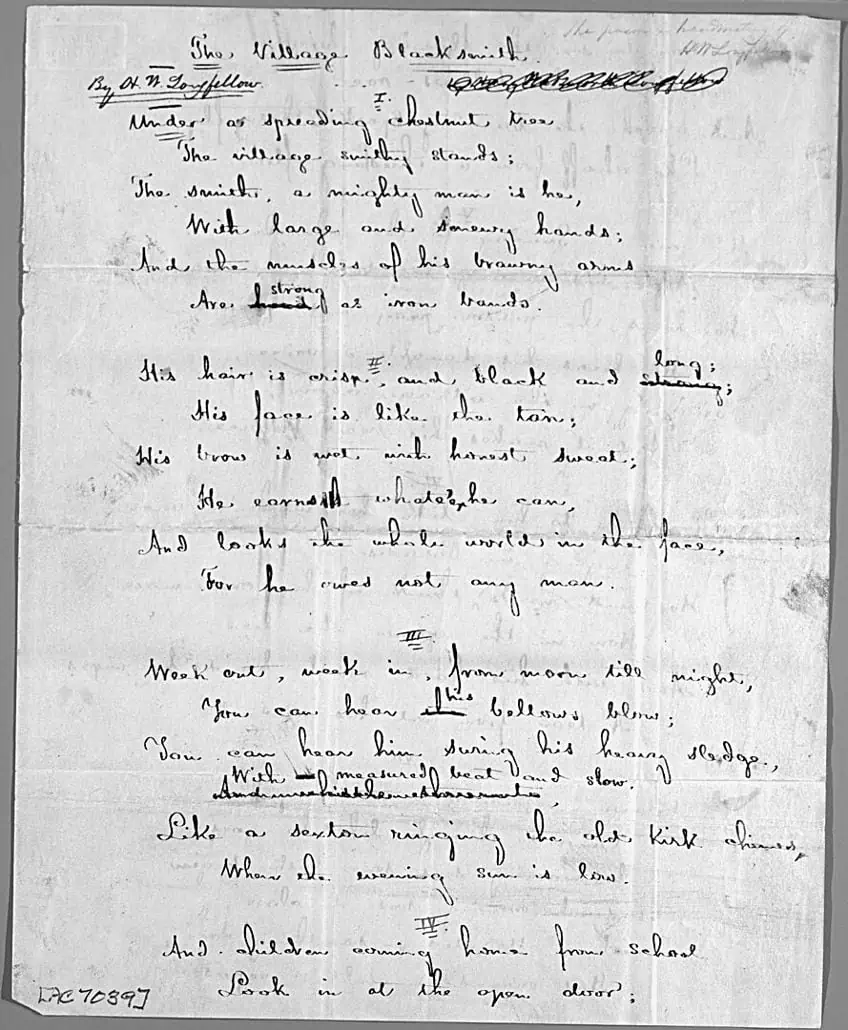 The Village Blacksmith (1840) by Henry Wadsworth Longfellow; User, Public Domain, via Wikimedia Commons
The Village Blacksmith (1840) by Henry Wadsworth Longfellow; User, Public Domain, via Wikimedia Commons
However, a narrative poem may also make use of other narrative elements, such as characters and character development. It isn’t very often that your usual poem will make use of characters, but when it comes to narrative poems, this is generally very common. Many poems will have a poetic subject of some description and there may also be a poetic object, such as a love poem in which the speaker would be the former and the person that they are projecting their love onto being the latter.
The difference in a narrative poem is that there could either be far more characters, and those characters may even speak or develop over the course of the poem. If a narrative poem is the length of something like one of Homer’s epics, then the characters will significantly change over the course of the narrative that has been laid out.
The thing that then differentiates a narrative poem from a prose narrative piece is that a narrative poem still makes use of certain poetic conventions. This could mean that it still makes use of poetic concepts like meter, which is the stressing of different syllables to produce a certain effect. This leads to a certain rhythm, and rhythm is not something one associates with a novel.
Furthermore, one generally does not associate the use of poetic techniques like rhyme or the use of alliteration with your typical prose piece.
Narrative poems do not need to make use of any of these poetic techniques or concepts, but they generally do make use of at least a few of them. However, there are various types of this form that make use of different narrative poem structures and are therefore approached in a different way. Let’s have a look at a few of the different types of narrative poetry to see some of those differences.
Types of Narrative Poetry
There are many different types of narrative poetry, and they all often follow their own narrative poem structure and make use of certain conventions unique to that particular form. Some of the most common types of narrative poetry include:
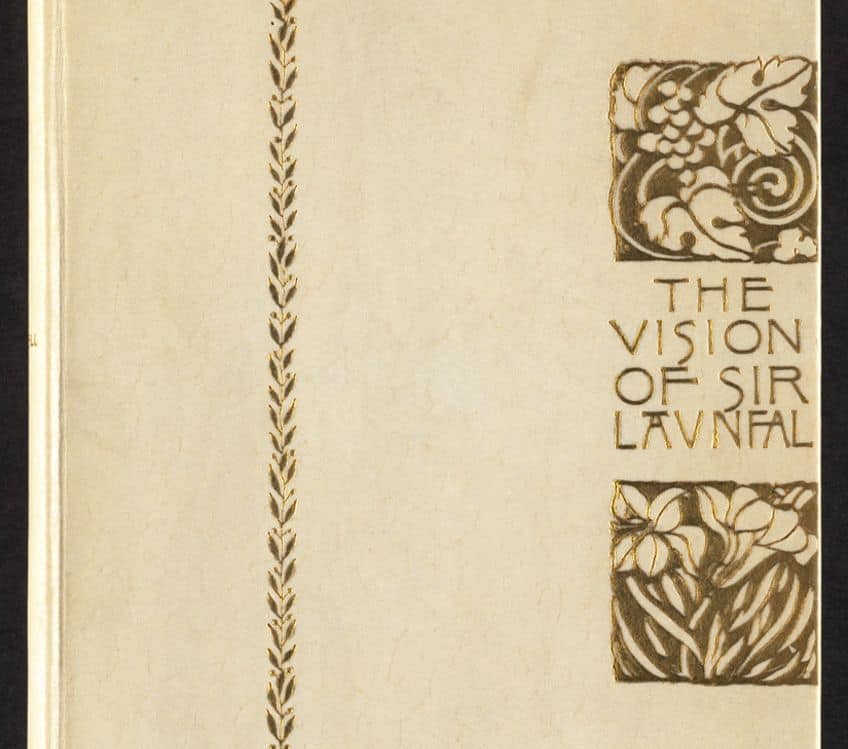 The vision of Sir Launfal book cover (1891) by James Russell Lowell; Sarah Wyman Whitman (1842-1904), artist, binding designer. (Uploaded on Flickr by Boston Public Library), CC BY 2.0, via Wikimedia Commons
The vision of Sir Launfal book cover (1891) by James Russell Lowell; Sarah Wyman Whitman (1842-1904), artist, binding designer. (Uploaded on Flickr by Boston Public Library), CC BY 2.0, via Wikimedia Commons
- Ballads: This form of narrative poetry is a form that recounts the story of a hero of some kind, and it typically focuses on the dramatic events of that character’s narrative. This form commonly makes use of quatrains (four-line stanzas) that typically use an ABAB rhyme scheme. Common themes include love and tragedy, and some of the most famous examples of the ballad include Coleridge’s The Rime of the Ancient Mariner and Edgar Allen Poe’s Annabel Lee.
- Epics: This is probably the oldest of all narrative poem types, and they are long narratives that deal with heroic characters who typically go on some kind of a quest or become involved in an important historical or mythological event. They often make use of either blank verse or couplets. Their length is one of their defining characteristics. Some of the most famous examples are the Homeric poems The Iliad and The Odyssey, but also immensely famous narrative poems like The Epic of Gilgamesh and Beowulf.
- Idylls: These narrative poems are focused on producing a certain idealized image. These poems typically focus on natural and rural landscapes that are happy and peaceful. They do not tell major stories of conflict and are rather about simple events with simple characters. They do not typically make use of any specific narrative poem structure and are instead generally shorter than some other forms of narrative poetry. Some famous examples include The Passionate Shepherd to His Love by Christopher Marlow and The Village Blacksmith by Henry Wadsworth Longfellow.
- Lays: These narrative poems are generally shorter than epics or ballads, and they are often focused on tales of love or adventure. They have their origins in medieval Europe, and they are typically built around a more musical form with rhyme and rhythm that makes them a perfect accompaniment to music. Some of the most notable examples of lay poetry include the anonymous Sir Orfeo and Sir Launfal lay poems. It is likely the least common of these forms of narrative poetry.
Narrative poetry may be a very broad overarching label, but as has been shown, there are a number of different types of narrative poems, and they are distinct in their general presentation and the way in which they are structured.
However, let’s now have a look at some of the most famous narrative poems and poets.
Famous Narrative Poems and Their Authors
There are many famous narrative poems in the world, and many of them have formed an integral part of the tradition of poetry in general. So, let’s have a look at a few of the most important and influential pieces of narrative poetry that have ever been written:
- The Epic of Gilgamesh by an unknown Mesopotamian author: This is one of the oldest and most important pieces of literature to have ever been discovered. It tells the story of King Gilgamesh and his quest to achieve immortality. It is considered to be one of the most important pieces of poetry from both a literary perspective as well as a religious one, as it has also become one of the earliest known instances of the great flood myth that can be found in many examples of religious texts.
- The Iliad and The Odyssey by Homer: These ancient Greek epics are often considered alongside one another as they do share some common characteristics. They, respectively, tell the story of the Trojan War and the journey of Odysseus. They have become some of the most important examples of narrative poetry to have ever been written and foundational works in the Western literary canon. The exact authorship of these texts is also somewhat debated, but they are attributed to a figure known as Homer.
- The Divine Comedy by Dante Alighieri: This narrative poem is one of the most important in the history of Christian literature. It is an Italian poem that depicts the poet himself as the main character as he descends through the Inferno (hell) and eventually reaches the very bottom so he can leave, enter Purgatory and ultimately reach Paradise (heaven). It is perhaps best known for structuring the Inferno around the Seven Deadly Sins and thus popularizing the idea for centuries to come.
- Paradise Lost by John Milton: This narrative poem is another of the most important in the Christian tradition. This English poem tells the story of the literal loss of the paradise of Eden for humanity. It tells the story of the fall of Lucifer from heaven and his eventual temptation of Adam and Eve which led to them being expelled from the garden. It is considered to be one of the most influential poems in the English language and an important piece of narrative poetry history.
- The Raven by Edgar Allen Poe. This poem, when compared to the others on this particular list, is a rather short narrative poem as it does not include the number of characters and lengthy detail of any of the grand epics. However, this is considered to be one of the most important pieces of American poetry to have ever been created. It tells the story of a man who has an eerie encounter with a raven who appears at his home. It is considered to be one of the most important instances of Gothic horror poetry too.
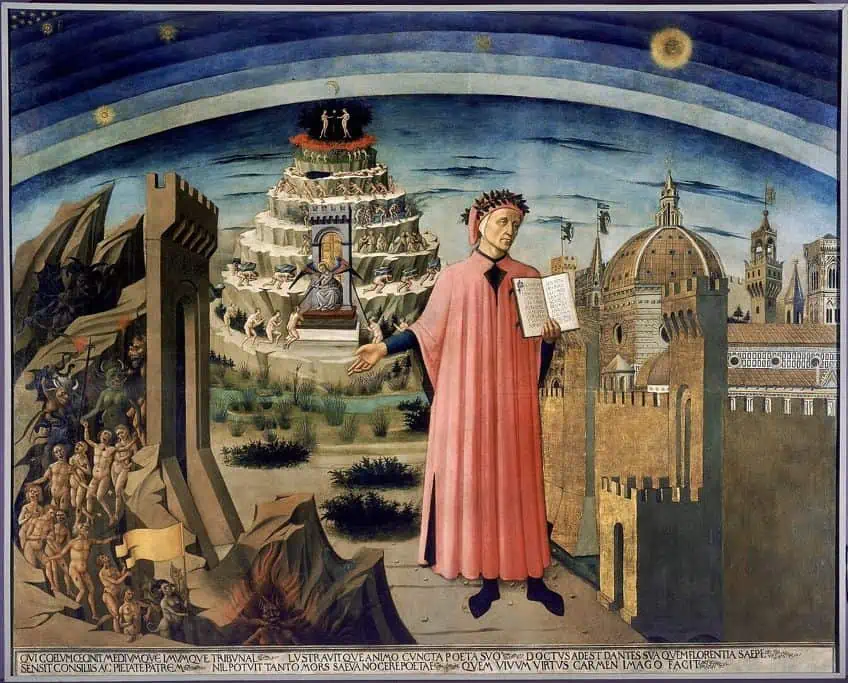 Dante and His Poem (1465) by Domenico di Michelino; Domenico di Michelino, Public domain, via Wikimedia Commons
Dante and His Poem (1465) by Domenico di Michelino; Domenico di Michelino, Public domain, via Wikimedia Commons
This has only been a short list of some of the most famous narrative poems and the poets attached to them. There are many other narrative poems in the world worth reading, but this short list should be a good starting point for someone who wants to have a look at some of the best and most influential examples out there.
How to Write Narrative Poetry
Narrative poetry is not necessarily like some other forms of poetry. While some of the types of narrative poems do make use of strict rules, this is not the most common thing. Narrative poems, by definition, are poems that tell a story. This means that so long as your poem tells a story, you are writing a narrative poem. So, when deciding to write any poetry, it is generally best to have an idea in mind before you get started. A narrative poem needs to tell a story, and as such, it is beneficial to have the idea for your story before you start writing. Not everyone plots out the whole story in advance, but it can be beneficial to do so.
This will allow you to prepare the characters and the events to be prepared ahead of time, and as such, you will be able to develop those characters toward a conclusion that is already determined.
Before starting on the actual writing, a prospective poet needs to decide on the kind of tone that the poem will incorporate as well as making use of a specific point of view. Who is telling the story? How much does this person know? Are they reliable or unreliable? Are they an active character in the narrative itself or are they simply recounting events that they have seen? These are important questions to ask yourself when deciding on the perspective from which a story is being told and how that narrator is telling the story.
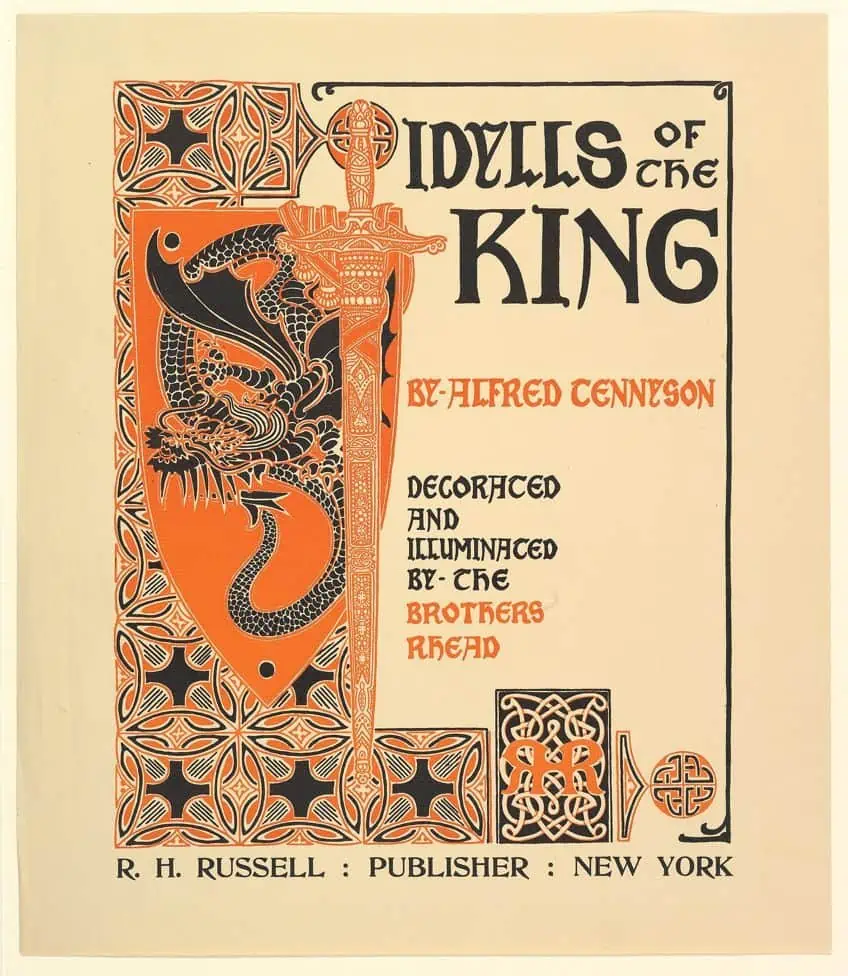 Idylls of the King by Alfred Tennyson, print, (1898) by Louis John Rhead; Metropolitan Museum of Art, CC0, via Wikimedia Commons
Idylls of the King by Alfred Tennyson, print, (1898) by Louis John Rhead; Metropolitan Museum of Art, CC0, via Wikimedia Commons
A story should, generally, be consistent. So, is this story dramatic, tragic, comedic, or anything in between? What are you trying to say with this story? Why are you telling this story? And once you have this information at hand, you can get writing. It would be best to decide on a narrative poem structure beforehand, such as the use of rhyme or poetic devices, but writing in a free verse style is just as valid.
Once your poem is complete, the journey is not yet done. A “completed” story is not yet complete, and one must revise it. Sometimes, there may be elements that were developed later in a narrative poem that are not included earlier on, and so you should revise to ensure some level of consistency. In addition, errors can occur, and they should be rooted out as best as possible. Once that’s all done, let someone else see it. What do they say? Take what they say on board and do your best to not be offended if they criticize it. There is always more one can do to learn, and learning from criticism is better than learning from praise. Rinse and repeat. There are always more poems that you could write.
And with that, we have come to the final end of our discussion about narrative poetry. We have asked and answered the question: “What is a narrative poem?”. There is always more to learn about everything out there in our world, but in this article, we looked at a brief history of narrative poetry, some of the different types of the form, some of the most famous narrative poems, the poets who wrote them, and even a brief detour into how to write narrative poetry. Hopefully, this has been an illuminating discussion about this long-standing narrative form. If you haven’t done so already, maybe read some of the narrative poems discussed today.
Frequently Asked Questions
What Is a Narrative Poem?
A narrative poem is simply a type of poem that tells a story. This is an extremely broad label, and so there are many different types of narrative poems. However, narratives are not a thing that many tend to associate with their average poem, but they are some of the oldest forms of poetry as they allowed for stories to be transferred down the generations through the use of a more appealing form. Many of the oldest narrative poems come from the oral traditions of folklore and mythology.
What Are the Different Types of Narrative Poems?
There are many different types of narrative poems, as the term is intended as a catchall that refers to a broad genre rather than anything more specific. If one wanted to be more specific, one could instead look at forms like epics, which are generally focused on heroes on grand adventures, ballads, which are shorter and often tell dramatic stories, or lays, which focus on a specific event. There are many different types of narrative poems, but they are all unified under the idea that they are telling a story.
What Is the Most Famous Narrative Poem?
The most famous narrative poems include ones like the lengthy Divine Comedy by Dante Alighieri, which is a Christian tale about a descent into hell and then an ascent through purgatory and into heaven, or another far shorter narrative poem like Edgar Allen Poe’s The Raven, which is a Gothic horror poem about an encounter with a raven. However, it is possible that the most famous narrative poems, because of their immense influence on literature, are the two ancient Greek epics by Homer: The Iliad and The Odyssey.
How Old Is Narrative Poetry?
It is difficult to give the exact era in which narrative poetry first arose, as it is one of the earliest forms of poetry that exists. It has its origins in the legacy of the oral tradition, and so there are many cultures that made use of narrative poetry in some form before they had the technology to necessarily write the poems down. Some of the oldest forms of recorded narrative poetry are the ancient Greek epics, such as the poems of Homer.
In 2005, Charlene completed her wellness degrees in therapeutic aromatherapy and reflexology at the International School of Reflexology and Meridian Therapy. She worked for a company offering corporate wellness programs for several years before opening her own therapy practice. In 2015, she was asked by a digital marketer friend to join her company as a content creator, and it was here that she discovered her enthusiasm for writing. Since entering the world of content creation, she has gained a lot of experience over the years writing about various topics such as beauty, health, wellness, travel, crafting, and much more. Due to various circumstances, she had to give up her therapy practice and now works as a freelance writer. Since she is a very creative person and as a balance to writing likes to be active in various areas of art and crafts, the activity at acrylgiessen.com is perfect for her to contribute their knowledge and experience in various creative topics.
Learn more about Charlene Lewis and about us.


